Ready to Step Up Your Lacrosse Game This Year. Master These 15 Must-Know Lacrosse Ball TipsReady to Step Up Your Lacrosse Game This Year. Master These 15 Must-Know Lacrosse Ball Tips
As an avid lacrosse player, I’m always looking for ways to improve my game. Whether you’re a beginner picking up a stick for the first time or a seasoned veteran, having the right gear and skills can give you that extra edge on the field.
After years of playing lacrosse and testing different techniques, I’ve discovered some tips that have really helped elevate my game. From improving shooting power to mastering quick stick handling, read on as I share 15 must-know lacrosse ball tips that will take your play to the next level this season.
Pack More Power Into Your Shot
Generating shot speed and power is crucial for scoring goals past elite goalies. To add some extra zip to your shot, focus on transferring your weight from your back foot to your front foot as you release the ball. Rotating your hips and core as you shoot will also engage your whole body and channel more energy into the ball.
You can also strengthen your shooting arm and upper body with wall ball drills using a lacrosse ball and bucket. Throwing the ball repeatedly against a rebounding wall mimics the shooting motion while building arm endurance and stick control.
Improve Your Cradling Skills

Smooth cradling means keeping the ball secure in your stick while running down the field or dodging defenders. For better cradling, loosen your grip and let the ball sit deeper in the pocket. Cradle from your wrists, not just your arms, allowing the head of your stick to absorb contact.
Practice cradling while doing agility drills to maintain control while moving at top speed. An added bonus – strong cradling skills will give you quicker hands for winning ground ball battles!
Master Quick Stick Handling
In lacrosse, the ability to catch and release the ball rapidly from your stick is known as having a “quick stick.” Quick stick handling allows you to get rid of the ball before defenders clamp down on you.
You can improve this skill by doing repetitive, close-range passing and catching drills. Start slow then work up to making quicker exchanges. Maintaining soft hands to cleanly receive passes takes your quick stick ability to the next level.
Develop Lightning Fast Reaction Time

Top lacrosse players have cat-like reflexes. You can sharpen your reaction time by doing agility drills like ladder footwork, cone drills, and box jumps. These exercises will help you change direction faster while improving coordination.
You can also practice reacting to rapid passes. Have a teammate stand close and whip the ball back and forth to you from different angles without warning. Adapting to erratic passes will tune your reflexes.
Strengthen Your Lacrosse Stick Grip
Boosting your grip strength will give you better control when cradling, shooting, and passing. Squeeze a tennis ball or racquetball in your top hand to tone your forearms and fingers. You can also use grip strengtheners, like those spring-loaded hand exercisers.
To reinforce proper hand positioning, slide your top hand up and down the shaft as you cradle. Placing your hand near the head gives you more whip on shots.
Enhance Ball Control and Retention
Shielding the ball from checks and pokes involves using your body and stick to keep possession. For better protection, hold the head of your stick close to your shoulder while cradling. Keeping your elbows tucked in and knees bent lowers your center of gravity for stability.
You can also retain possession longer by practicing cradling one-handed. Switch between your dominant and weak hand to handle checks from all angles.
Become a Ground Ball Magnet
Key Techniques for a Powerful Lacrosse Shot:
- Weight transfer from back to front foot
- Hip and core rotation
- Wall ball drills for arm strength
- Proper follow-through
Mastering the Art of Cradling: Smooth Moves for Ball Security
Smooth cradling is essential for keeping the ball secure in your stick while running down the field or dodging defenders. To improve your cradling, loosen your grip and let the ball sit deeper in the pocket. Cradle from your wrists, not just your arms, allowing the head of your stick to absorb contact.
Is practicing cradling during agility drills beneficial? Indeed, it is. Incorporating cradling into your agility drills helps maintain control while moving at top speed. This practice not only enhances your ball security but also contributes to quicker hands for winning ground ball battles.
Cradling Improvement Tips:
- Loosen grip for better ball control
- Cradle from the wrists
- Practice during agility drills
- Focus on maintaining control at high speeds
Quick Stick Handling: The Key to Rapid Ball Movement
In lacrosse, the ability to catch and release the ball rapidly from your stick is known as having a “quick stick.” This skill allows you to get rid of the ball before defenders clamp down on you, creating scoring opportunities and maintaining possession.

How can you develop quick stick handling? Start by doing repetitive, close-range passing and catching drills. Begin slowly, then gradually increase your speed. Maintaining soft hands to cleanly receive passes is crucial for taking your quick stick ability to the next level.
Quick Stick Handling Drill Progression:
- Start with slow, deliberate movements
- Gradually increase speed and complexity
- Focus on clean catches with soft hands
- Incorporate various angles and distances
Lightning-Fast Reflexes: Developing Rapid Reaction Time
Top lacrosse players are known for their cat-like reflexes. Sharpening your reaction time can give you a significant advantage on the field. Agility drills like ladder footwork, cone drills, and box jumps can help you change direction faster while improving coordination.
Are there specific drills to enhance reaction time for lacrosse? Yes, practicing reacting to rapid passes is an excellent way to improve. Have a teammate stand close and whip the ball back and forth to you from different angles without warning. Adapting to erratic passes will tune your reflexes and prepare you for game situations.

Reaction Time Enhancement Exercises:
- Ladder footwork drills
- Cone agility exercises
- Box jumps for explosive movements
- Rapid pass reaction drills
Iron Grip: Strengthening Your Lacrosse Stick Hold
Boosting your grip strength will give you better control when cradling, shooting, and passing. Simple exercises can make a significant difference in your stick handling abilities.
What are effective ways to improve lacrosse grip strength? Squeezing a tennis ball or racquetball in your top hand can tone your forearms and fingers. Additionally, using grip strengtheners, like spring-loaded hand exercisers, can provide targeted practice for your gripping muscles.
To reinforce proper hand positioning, practice sliding your top hand up and down the shaft as you cradle. Placing your hand near the head gives you more whip on shots, while a lower grip offers more control during possession.
Grip Strengthening Techniques:
- Tennis ball squeezes
- Hand grip exercisers
- Shaft sliding drills
- Varied hand positions during practice
Ball Control Mastery: Enhancing Possession and Protection
Shielding the ball from checks and pokes involves using your body and stick to maintain possession. For better protection, hold the head of your stick close to your shoulder while cradling. Keeping your elbows tucked in and knees bent lowers your center of gravity for stability.

Can practicing one-handed cradling improve ball retention? Absolutely. By practicing cradling with both your dominant and weak hand, you’ll be better prepared to handle checks from all angles. This skill is particularly valuable when facing aggressive defenders.
Key Aspects of Ball Control:
- Proper stick positioning near the shoulder
- Tucked elbows and bent knees for stability
- One-handed cradling practice
- Ambidextrous ball handling skills
Ground Ball Domination: Becoming a Possession Machine
Ground balls are often the deciding factor in lacrosse games. Beating your opponents to these crucial 50/50 balls can shift momentum and create scoring opportunities.
How can you improve your ground ball skills? When chasing ground balls, explode out of your athletic stance as you approach. Scoop through the ball in one continuous downward motion. Keep the ball far from your feet and use your body to shield it from defenders.
Practicing these techniques regularly will help you develop the instincts and reflexes needed to consistently win ground ball battles.
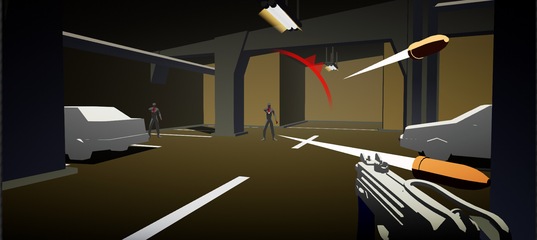
Ground Ball Mastery Tips:
- Explosive approach from athletic stance
- Smooth, continuous scooping motion
- Keep the ball away from feet
- Use body positioning for protection
Defensive Prowess: Perfecting Your Checking Abilities
Effective checking is a crucial skill for defenders in lacrosse. Throwing accurate checks can dislodge the ball from offensive players, creating turnovers and transition opportunities.
What are the key elements of successful checking? Aim your pokes and slaps at the opponent’s bottom hand or just above the pocket of their stick. Timing your checks to reach their stick as they cradle is critical for maximum effectiveness.
To improve your checking skills, work on your footwork by moving laterally to mirror dodging players. Shuffling to maintain defensive positioning gives you better checking angles and increases your chances of causing turnovers.
Defensive Checking Techniques:
- Target bottom hand or stick pocket
- Time checks with opponent’s cradle
- Practice lateral footwork
- Maintain proper defensive positioning
Precision Passing: Elevating Your Assist Game
Connecting on passes requires pinpoint aim and crisp execution. Accurate passing is the foundation of a strong offense and can create scoring opportunities for your team.

How can you improve your passing accuracy? For more precise passes, point your front elbow at your target and follow through towards them on release. Always lead your teammates so passes hit them in stride, allowing for smooth catches and quick transitions.
To practice passing at game speed, try firing balls against a wall then catching the rebounds. This drill improves reaction time while dialing in your passing precision under pressure.
Key Elements of Accurate Passing:
- Front elbow alignment with target
- Proper follow-through on release
- Lead passes for teammates in motion
- Wall ball drills for speed and accuracy
Faceoff Mastery: Dominating the Draw
Winning faceoffs can provide a significant advantage in lacrosse, giving your team more possessions and scoring opportunities. Mastering faceoff techniques requires a combination of strength, speed, and technique.
What are effective strategies for improving faceoff skills? Practice quick hand movements to clamp down on the ball faster than your opponent. Work on your stance and body positioning to gain leverage during the faceoff.

Incorporating strength training exercises that target your core, forearms, and legs can give you an edge in the physical battle of faceoffs. Additionally, studying your opponents’ tendencies can help you anticipate their moves and react accordingly.
Faceoff Improvement Techniques:
- Quick hand movement drills
- Proper stance and body positioning
- Targeted strength training
- Opponent study and anticipation
Shooting Accuracy: Hitting Your Target Every Time
Accurate shooting is essential for scoring goals and putting pressure on the opposing team’s defense. Developing consistency in your shot placement can make you a more dangerous offensive threat.
How can you enhance your shooting accuracy? Focus on your follow-through, ensuring that your stick continues towards your target after release. Practice shooting at specific spots on the goal, such as corners or just inside the posts.
Incorporating different shot types into your practice routine, such as sidearm, underhand, and overhand shots, can make you more versatile and unpredictable to goalies. Regular repetition and muscle memory development are key to improving accuracy over time.
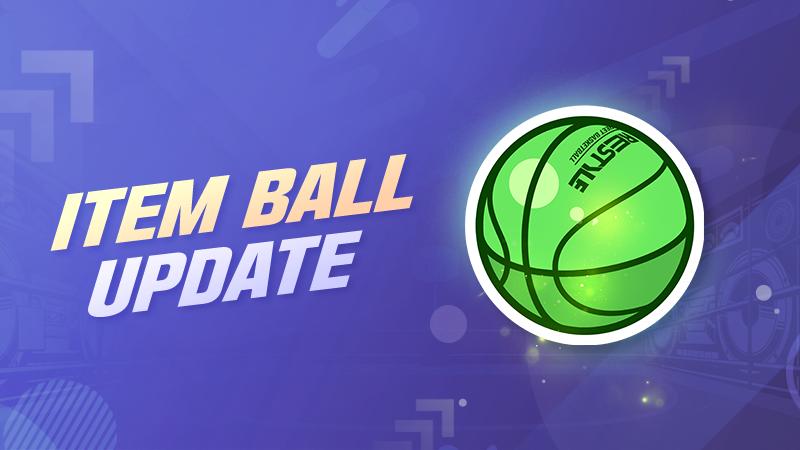
Shooting Accuracy Drills:
- Target practice on specific goal areas
- Follow-through focus
- Varied shot type practice
- Repetition for muscle memory
Dodging Techniques: Beating Defenders with Skill
Effective dodging allows offensive players to create separation from defenders, opening up scoring opportunities or drawing slides to find open teammates.
What are some key dodging moves to master? The split dodge, roll dodge, and face dodge are fundamental techniques that every offensive player should have in their arsenal. Practice these moves at game speed, focusing on quick changes of direction and maintaining ball control throughout the dodge.
Incorporating fakes and hesitation moves into your dodges can make you more unpredictable and difficult to defend. Remember to keep your head up during dodges to maintain field vision and identify open teammates or shooting lanes.
Essential Dodging Moves:
- Split dodge
- Roll dodge
- Face dodge
- Hesitation and fake moves
Endurance Building: Lasting Through the Fourth Quarter
Lacrosse is a physically demanding sport that requires high levels of endurance. Building your stamina can help you maintain peak performance throughout the game, especially in crucial late-game situations.

How can lacrosse players improve their endurance? Incorporate interval training into your workout routine, alternating between high-intensity bursts and active recovery periods. This mimics the stop-and-start nature of lacrosse and helps improve both aerobic and anaerobic fitness.
Long-distance running can build a strong cardiovascular base, while sprint workouts enhance your ability to make quick, explosive movements on the field. Don’t forget to include proper nutrition and hydration in your endurance-building strategy.
Endurance Training Methods:
- Interval training
- Long-distance running
- Sprint workouts
- Proper nutrition and hydration
Mental Toughness: Developing a Winning Mindset
Physical skills are crucial in lacrosse, but mental toughness can often be the difference between winning and losing. Developing a strong mental game can help you perform under pressure and overcome challenges on the field.
How can lacrosse players build mental toughness? Practice visualization techniques, imagining successful plays and positive outcomes before games. Develop a pre-game routine to help you focus and get into the right mindset.
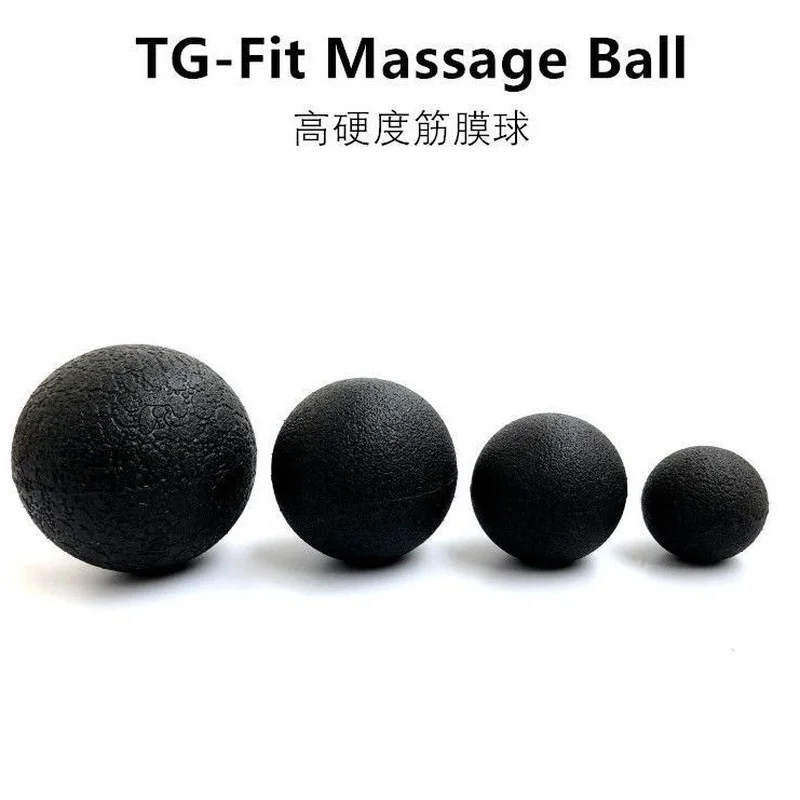
Learning to stay calm under pressure and maintain confidence even after mistakes is crucial. Incorporate mindfulness and breathing exercises into your training to improve focus and emotional control during high-stress game situations.
Mental Toughness Strategies:
- Visualization exercises
- Pre-game routines
- Mindfulness and breathing techniques
- Positive self-talk and confidence building
By incorporating these 15 essential lacrosse ball tips into your training regimen, you’ll be well on your way to elevating your game to new heights. Remember, consistent practice and a commitment to improvement are key to mastering these skills. Whether you’re a beginner or a seasoned player, focusing on these areas will help you become a more complete and effective lacrosse player. Keep pushing yourself, stay dedicated to your craft, and watch as your performance on the field reaches new levels of excellence.
As an avid lacrosse player, I’m always looking for ways to improve my game. Whether you’re a beginner picking up a stick for the first time or a seasoned veteran, having the right gear and skills can give you that extra edge on the field.
After years of playing lacrosse and testing different techniques, I’ve discovered some tips that have really helped elevate my game. From improving shooting power to mastering quick stick handling, read on as I share 15 must-know lacrosse ball tips that will take your play to the next level this season.
Pack More Power Into Your Shot
Generating shot speed and power is crucial for scoring goals past elite goalies. To add some extra zip to your shot, focus on transferring your weight from your back foot to your front foot as you release the ball. Rotating your hips and core as you shoot will also engage your whole body and channel more energy into the ball.
You can also strengthen your shooting arm and upper body with wall ball drills using a lacrosse ball and bucket. Throwing the ball repeatedly against a rebounding wall mimics the shooting motion while building arm endurance and stick control.
Improve Your Cradling Skills

Smooth cradling means keeping the ball secure in your stick while running down the field or dodging defenders. For better cradling, loosen your grip and let the ball sit deeper in the pocket. Cradle from your wrists, not just your arms, allowing the head of your stick to absorb contact.
Practice cradling while doing agility drills to maintain control while moving at top speed. An added bonus – strong cradling skills will give you quicker hands for winning ground ball battles!
Master Quick Stick Handling
In lacrosse, the ability to catch and release the ball rapidly from your stick is known as having a “quick stick.” Quick stick handling allows you to get rid of the ball before defenders clamp down on you.
You can improve this skill by doing repetitive, close-range passing and catching drills. Start slow then work up to making quicker exchanges. Maintaining soft hands to cleanly receive passes takes your quick stick ability to the next level.
Develop Lightning Fast Reaction Time

Top lacrosse players have cat-like reflexes. You can sharpen your reaction time by doing agility drills like ladder footwork, cone drills, and box jumps. These exercises will help you change direction faster while improving coordination.
You can also practice reacting to rapid passes. Have a teammate stand close and whip the ball back and forth to you from different angles without warning. Adapting to erratic passes will tune your reflexes.
Strengthen Your Lacrosse Stick Grip
Boosting your grip strength will give you better control when cradling, shooting, and passing. Squeeze a tennis ball or racquetball in your top hand to tone your forearms and fingers. You can also use grip strengtheners, like those spring-loaded hand exercisers.
To reinforce proper hand positioning, slide your top hand up and down the shaft as you cradle. Placing your hand near the head gives you more whip on shots.
Enhance Ball Control and Retention
Shielding the ball from checks and pokes involves using your body and stick to keep possession. For better protection, hold the head of your stick close to your shoulder while cradling. Keeping your elbows tucked in and knees bent lowers your center of gravity for stability.
You can also retain possession longer by practicing cradling one-handed. Switch between your dominant and weak hand to handle checks from all angles.
Become a Ground Ball Magnet
Ground balls are one of the biggest battles in every lacrosse game. Beat your opponents to those crucial 50/50 balls by improving your ground ball skills.
When chasing ground balls, explode out of your athletic stance as you approach. Scoop through the ball in one continuous downward motion. Keep the ball far from your feet and use your body to shield it from defenders.
Boost Your Defensive Checking Abilities
Throw accurate checks to dislodge the ball from offensive players. Aim your pokes and slaps at their bottom hand or just above the pocket. Timing your checks to reach their stick as they cradle is critical.
Work on check footwork by moving laterally to mirror dodging players. Shuffling to maintain defensive positioning gives you better checking angles.
Increase Your Passing Accuracy
Connecting on passes requires pinpoint aim and crisp execution. For more accurate passes, point your front elbow at your target and follow through towards them on release. Always lead your teammates so passes hit them in stride.
Practice passing at game speed by firing balls against a wall then catching the rebounds. This improves reaction time while dialing in your passing precision.
Take Faceoffs to the Next Level
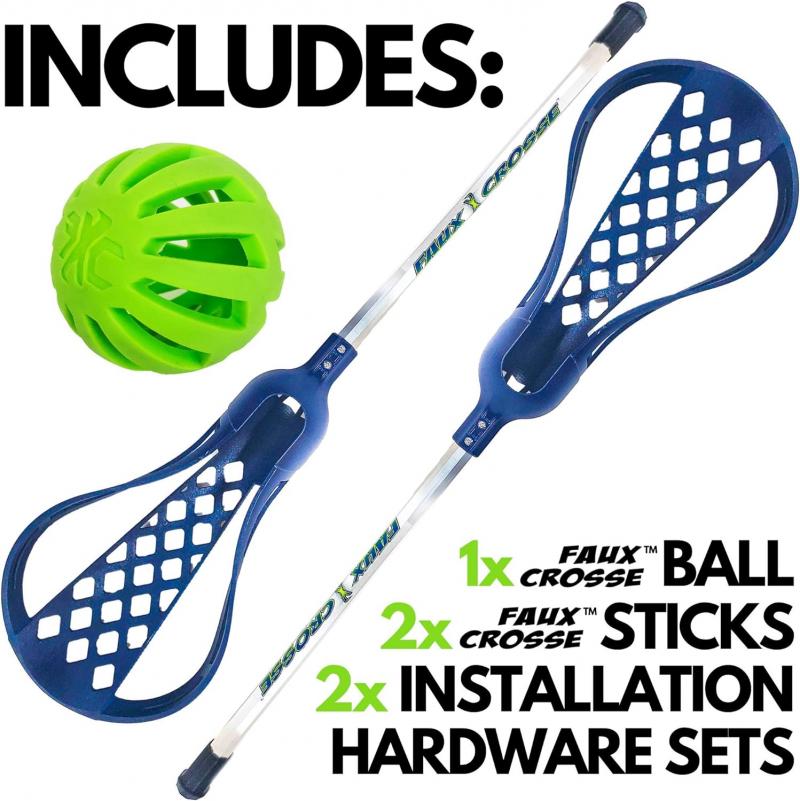
Gaining possession off the draw can set the tone for a lacrosse game. For cleaner faceoff technique, stay low in an athletic stance and explosively drive forward with your legs on the whistle.
Drill different moves like the clamp, jam, or rake to quickly gain control. Dominating faceoffs gives your team an instant edge.
Dominate With Silky Smooth Footwork
Dodging past defenders and driving towards the cage requires dynamic footwork. Master change of direction by practicing cuts, splits, and rolls. Work both your dominant and weak hands to maneuver in tight spaces.
Quickness and agility let you create separation. Do lateral shuffle drills and sets of short sprints to sharpen your feet.
Unlock Sneaky Lacrosse Ball Shooting Angles
The best scorers don’t always take straight shots at the goal. Work on ripping side arm shots and sweeping bouncers to find open corners past keepers.
Vary your release point and arc to expand your shooting range. Fire shots on the run and from awkward positions. Finding those unconventional shooting angles can pay off big-time.
Learn Proper Wall Ball Rebounding Technique

Wall ball drills build stick skills, shooting, and conditioning. But without proper rebounding technique, you won’t get the full benefits.
When retrieving wall ball rebounds, chase down errant passes and work on scooping ground balls. Don’t just let the ball bounce back – make every rep a chance to sharpen your game.
Step Up Your Conditioning and Endurance
Lacrosse demands tremendous athleticism. Boost your stamina with sprint intervals, distance running, and agility circuits. Strength training your lower body and core also prevents fatigue.
Maintaining your conditioning gives you an advantage, especially in the closing minutes of tight games. Put in the off-season work so fitness never holds you back.
Gain a Competitive Edge at Tryouts
Preparing for lacrosse tryouts requires next-level effort and skills. Follow these tips to earn your spot on the roster.
Bring your A-game focus and energy, even on repetitive drills. Hustle non-stop and communicate loudly on defense. On offense, only take high percentage shots.
Trust your abilities and display full athletic potential. With smart, confident play, you’ll turn heads and make the team.
By mastering these advanced lacrosse techniques and tactics, you’ll be on the path to playing your best season ever. Consider investing in a quality lacrosse ball bag or bucket to store your gear. Then grab your stick and get ready to dominate on the field!
Improve Your Cradling Skills
If you’re looking to step up your lacrosse game this year, mastering some key lacrosse ball skills is a must. From perfecting your cradling to nailing quick stick passes, having control of the ball is essential. While natural talent certainly plays a role, consistent practice with a lacrosse ball bag or bucket of lax balls is how you’ll really improve. Here are 15 must-know tips to take your handling to the next level.
1. Keep Your Hands Loose
One of the most common mistakes beginners make is cradling with a tight, rigid grip. This leads to the ball easily falling out of the pocket. Instead, keep your hands loose and flexible around the stick, absorbing the ball’s motion as you cradle. Relax your bottom hand while keeping your top hand firm. Finding this balance takes experimentation, but stay loose and you’ll retain more control.
2. Cradle High
Make sure you’re cradling the ball high in the pocket, up near the scoop. Cradling low in the pocket leads to less ball control and handling speed. Get in the habit of cradling high right from the start. When scooping ground balls, guide the head cover above the ball before cradling to keep it high.
3. Cradle Hard

Simply running while loosely cradling won’t get the job done. You need to aggressively and actively cradle to achieve maximum ball control. Snap your wrists forcefully and swiftly while cradling to keep the ball super secure. Practice cradling hard until it becomes second nature.
4. Change Directions
Zigzagging, changing pace, and turning sharply while cradling helps build handling skills. Set up cones for agility ladder-type footwork drills. Weave back and forth while swiftly cradling, keeping the ball locked in the pocket. Changing directions while maintaining control gets you cradling like a pro.
5. Cradle One-Handed
Take your cradling to the next level by drilling one-handed. Start by cradling strong hand only, focusing on keeping the ball secure. Then switch to your weak hand. Cradling one-handed improves overall hand and arm strength for enhanced handling. Just don’t try this move in games until you’ve fully mastered it.
6. Practice Toe Drags

Toe drags allow you to pull the ball in and out of your stick, dodging defenders. While cradling, press the ball to the ground with your bottom hand then pull your stick back up. Go slow to start, then increase speed. Master toe drags and you’ll gain a killer dodging move.
7. Cradle Sitting
Here’s an easy way to watch TV and improve at the same time. Sit comfortably and cradle while you relax, focusing on keeping the ball secure. Start with your strong hand, eventually switching to your weak hand. This trains muscle memory so cradling becomes second nature.
8. Cradle to Music
Cradling to music helps you develop a swift, rythmic cradling style. Pick songs with a strong beat around 120 bpm. Cradle steadily along with the beat, emphasizing smooth motions. Make a whole playlist of cradling tunes for practice sessions.
9. Shadow Cradle
Shadow cradling improves handling without needing a ball or stick. Sit or stand holding your hands as if cradling, then go through the motions. Really focus on your wrist snap, arm motion and pendulum swing. This trains key muscle memory so you cradle like a pro.
10. Roll Dodge
Dodging defenders requires expert cradling skills. Set up cones as “defenders” then practice quick roll dodges around them. Keep your stick close to your body while swiftly cradling past the cone. Work on juke moves by faking one way then cradling the other.
11. Behind-the-Back Cradling
Behind-the-back cradling looks awesome and keeps the ball safe. Practice crossing your arms, transferring the stick to your weak hand behind your back. Then bring it back around to the front stronghand side. Go back and forth until the motion feels smooth.
12. Box Cradle
Use four cones to make a box. Start at cone 1, cradle to cone 2 and around the box back to cone 1. Focus on protecting the ball and changing direction at each cone. Work both clockwise and counter-clockwise around the box, amping up speed.
13. Pool Noodle Cradling
Cut a pool noodle into thirds and place on your stick to cradle. Having to cradle wider enhances wrist and arm strength. Angle the stick to make cradling diagonal across your body for added challenge. Remove the noodle after a few minutes to feel the improvement.
14. Partner Pass and Cradle
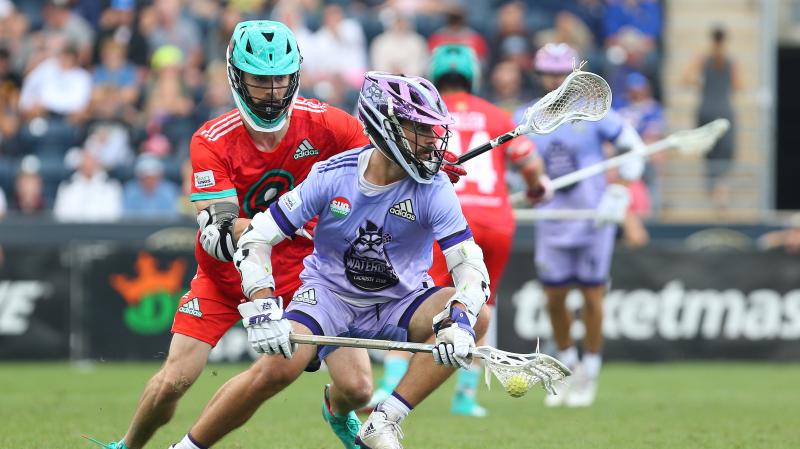
Pass back and forth with a teammate, cradling the return pass each time. Concentrate on quickly securing the catch then transitioning right into smooth cradling. Keep your eyes up while swiftly cradling the ball back to your partner.
15. Cradle Ladder Drill
Set up a 2- or 3-ball ladder drill. Start by cradling ball 1, then quickly scoop ball 2 and cradle it, then scoop ball 3, etc., working down and back the ladder. Work on quick scooping and cradling under pressure.
Consistently drilling cradling and handling skills will rapidly boost your game. Spend time each practice session fully focused on cradling mastery. Train hard and you’ll gain the edge over your defender, capitalizing on more goals. With these tips and hard work, you’ll be cradling like the pros in no time. Now get out there with your lacrosse ball bag and dominate the field!
Master Quick Stick Handling
Are you looking to step up your lacrosse game this year and really take your skills to the next level? Mastering quick stick handling is one of the most important things you can do as a lacrosse player. With quick, decisive stick skills you’ll have the confidence and control to make plays happen on the field.
Improving your lacrosse ball handling takes time and commitment, but any player can get better with focused practice. Here are 15 must-know tips to help you develop lightning fast hands and take your game to new heights this season.
1. Strengthen Your Grip
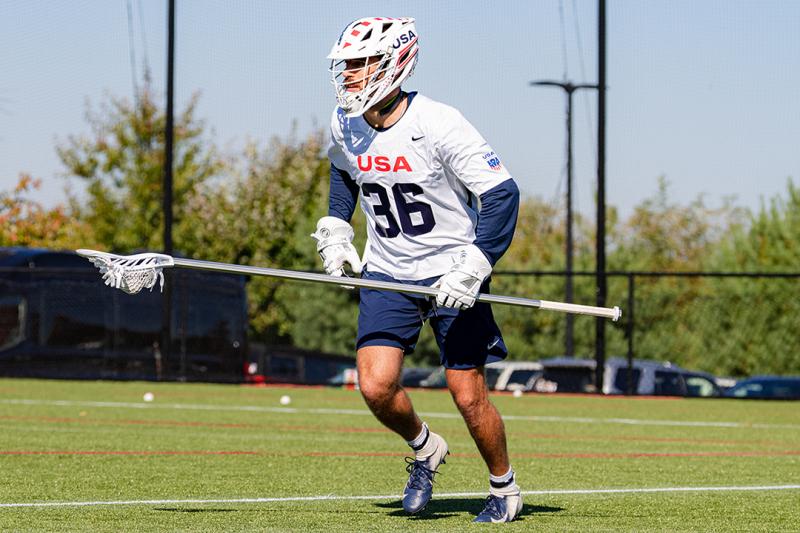
Having a solid grip on your stick is the foundation for every lacrosse technique. Spend time strengthening your hands and forearms with exercises like squeeze balls or wrist curls. On the field, make sure you’re holding the stick correctly in your fingers and palms. Keep a relaxed but controlled clasp throughout play.
2. Focus on Footwork
Quick feet go hand-in-hand with quick hands in lacrosse. Work on coordination drills that combine stick handling with agile foot movements. Try incorporating ladder drills, jumping rope, and shuffling side to side while maintaining control of the ball in your stick.
3. Perfect Your Cradling
Master the cradling motion with your top hand until it becomes second nature. Keep the head of the stick parallel to the ground and use your wrist to rock the ball back and forth smoothly. Start slow and increase speed while maintaining complete control over the ball.
4. Try Two-Ball Drills
Juggling two lacrosse balls at once is a great way to improve hand-eye coordination and reaction time. Start with easy underhand tosses from one side of the stick to the other. As you get better, incorporate quicker overhand passes and behind-the-back moves.
5. Work Both Hands Equally
Don’t neglect your off-hand just because you primarily cradle and pass with your dominant. Spend time practicing fundamental stick skills like cradling, catching, and scooping with both hands. You never know when you’ll need to switch grips in a game.
6. Master Quick Stick Passes
Being able to catch and pass the ball in one fluid motion is a hugely valuable skill. Do repetitive passing drills to program your muscles until you can make accurate feeds without hesitation. Start close up with a partner before moving further apart.
7. Keep Your Eyes Up
Get in the habit of scanning the field as you handle the ball, not staring at your stick. Know where teammates and defenders are at all times. Mastering stick skills means not having to think about them!
8. Play Wall Ball
Wall ball is a classic way to sharpen reflexes and technique. Start close to the wall and work on quick passes, changing grip, catching high and low. Move further back as your skills improve. Always keep your knees bent and stay light on your feet.
9. Incorporate Stick Tricks

Showy stick tricks like behind-the-backs and splits aren’t just for flair. Mastering these advanced moves translates to quicker hands and greater ball control when it counts. Start with YouTube tutorial videos to learn new tricks.
10. Play Against the Shot Clock
Work on executing cradles, catches, passes, and shots as fast as possible. Set a stopwatch or shot clock app for 10-15 seconds and see how many reps you can complete. Competing against the clock engages your fast-twitch muscles.
11. Strengthen Your Wrists
Your wrists directly control the tilt, rotation, and angle of the stick head, so keep them strong. Use stretchy exercise bands to perform wrist extensions, flexions, and rotations. Juggling tennis balls is another great wrist workout.
12. Loosen Up
Just like warming up your legs, be sure to activate and stretch your arms and wrists before practice and games. Get the blood flowing with jumping jacks, arm circles, and wrist rolls. Dynamic stretching improves mobility for quick stick moves.
13. Analyze the Greats

Watch lacrosse film or YouTube highlights of pro players known for their incredible ball handling. Take note of their form, movement, and strategy. See if you can imitate their techniques for developing your own skills.
14. Go Solo
While partner drills are helpful, don’t underestimate going solo. Work on your fundamentals without distractions. Challenge yourself to string moves together into a flow – behind-the-back, split dodge, quick-stick feed at the wall.
15. Confidence is Key
Having trust in your ball handling abilities allows you to play instinctively without hesitation. Implement these tips into your training regimen. With consistent practice, the confidence in your slick stick skills will come.
Developing quick, precise stick handling takes dedication, but it’s one of the most rewarding ways to maximize your game. This season, commit to putting in the work both on and off the field. Before you know it, those lightning fast hands will be second nature when you hit the turf.
With these essential stick handling drills and skills in your arsenal, you’ll have the moves and control to ruin defenders. Are you ready to step up and master the lacrosse ball this year? Get out there and start putting in the practice with your new tricks. You’ve got this!
Develop Lightning Fast Reaction Time
As a lacrosse player, quick reactions can be the difference between successfully scooping up a ground ball or allowing it to slip away. If you want to take your skills up a notch this season, focus on drills and techniques to develop lightning fast reaction time.
Having cat-like reflexes allows you to react instantly to changes on the field. You can snag errant passes, evade defenders, and pounce on loose balls before anyone else. Reaction time is something all players can improve with dedicated training.
Follow these 15 tips to help sharpen your reflexes and give you an edge in competition. With quickfire muscles and instincts, you’ll have what it takes to stand out this year.
1. Master Proper Ready Stance
Staying balanced in an athletic ready position allows you to explode in any direction. Keep your knees bent, weight centered, and head up. Practice reacting quickly from a static ready stance.
2. Do Agility Ladder Drills
Agility ladders naturally improve coordination and foot speed. Run through different ladder patterns, focusing on precise foot placement and rapid changes of direction. Add ball handling for greater challenge.
3. Incorporate Box Jumps

Explosive box jumps engage your fast-twitch muscles and translate to quicker reactions on the field. Jump up onto a box or platform as fast as you can, stepping down under control. Keep your core tight.
4. Challenge Your Reflexes
Have a partner stand close and randomly drop tennis balls for you to catch. Start with just one or two balls before incorporating multiple tosses from different angles to challenge your reflexes.
5. Use a Rebounder
Angle a lacrosse rebounder unpredictably so you never know where the ball will bounce. React quickly to scoop up ground balls after erratic rebounds off the netting.
6. Catch Water Balloons
Water balloon catches force you to react instantly. Have a partner toss balloons from changing distances and trajectories. Move fast to secure each catch without popping the balloon.
7. Incorporate Rapid Foot Ladders
Quick lateral shuffle steps through a ladder boost overall foot speed. Face side-to-side or forwards and backwards while moving rungs. Use crossover steps to change direction rapidly.
8. Play Lightning Passing

This fast-paced partner passing drill improves reaction time. Stand 10 yards apart and throw the ball back and forth as quickly as possible. One point for every clean catch.
9. Band Resisted Starts
Attach exercise bands to a partner for resistance. Explode against the band, racing for 5 yards. Focus on an explosive first step from a static start position.
10. Compete With Quickness Drills
Set up cones for drills like Dots and Boxes. Sprint between dots and shuffle or backpedal around boxes. Race against teammates to up the intensity.
11. Play Hot Potato
Pass a lacrosse ball rapidly in a circle without dropping it. Players must react fast when the ball is thrown to them unexpectedly. Increase speed for greater challenge.
12. Incorporate reactions into weight training
Add medicine ball tosses or rebounder catches between sets of lifts. Train your muscles to react explosively even when fatigued.
13. Practice with Tennis Balls
Tennis balls have less friction and move quicker off walls or turf than lacrosse balls. Chase down errant tennis ball rebounds to tune your reaction time.
14. Visualize Quick Reactions
Mentally picture yourself moving explosively to snag passes, scoop ground balls, and elude defenders. Visualization helps program your neuromuscular pathways.
15. Stay Mentally Focused
Tuning out distractions and hyper focusing your attention is key. Scan the field and watch the ball intently so you can process movements and react instantly.
Developing lightning quick reflexes and change of direction takes time, but pays huge dividends on the field. With dedicated training, you can tap into your fast-twitch capabilities and react instinctively during play.
Bring these reaction time tips to your practices and workouts. As your reflexes get sharper, you’ll notice major improvements in scooping, dodging, catching, and more. Just imagine confidently out-reacting your opponents this season!
Don’t let another ground ball slip by. Make this the year you transform into a quickfire lacrosse machine. Your opponents won’t know what hit ’em. Now get out there and start honing those cat-like reflex gains!
Strengthen Your Lacrosse Stick Grip

Want to take control of the ball and dominate the field this season? It all starts with building a vice-like grip strength to master your lacrosse stick.
With a weak stick grip, you’ll fumble catches, lack power on shots, and get disarmed by defenders. Transforming your hands and forearms into a muscle fortress takes time, but the payoff is huge.
Follow these 15 grip-strengthening tips to get a leg up on the competition when springtime rolls around. You’ll be ready to clamp down and own the ball.
1. Squeeze Strengthening Devices
Grip strengtheners like hand exercisers or stress balls force your finger muscles to work. Squeeze them in each hand during downtime to build grip endurance.
2. Use Thick Lacrosse Shafts
A thicker shaft requires more strength and control to clamp down on. Use bulky shafts for training before switching to game shafts for even greater feel and command.
3. Hang Tough from a Pull-Up Bar
Hanging tight with palms facing away engages all the muscles up your arms used for controlling a stick. See how long you can hang on as you build grip strength.
4. Rope Climbs

Climbing a thick rope relies heavily on forearm strength and crushing hand power. Keep your core tight as you climb hand-over-hand.
5. Farmer’s Walks with Dumbbells
This full body exercise also taxes your crushing grip strength. Carry heavy dumbbells at your sides for time or distance to fatigue your hands and arms.
6. Use Fat Lacrosse Shafts
Fatter shafts challenge your hand muscles more than standard handles. Use them for wall ball, shooting practice, and stick tricks to build grip strength.
7. Rock Climbing
The advanced finger and forearm strength needed for rock climbing directly translates to the lacrosse field. Even indoor climbing engages the muscles used for stick control.
8. Plate Pinches
Grip a weight plate between your thumb and fingers, squeezing it tight without letting it slip. Hold for time while resisting urge to re-grip.
9. Focus on Wrist Curls
Wrist curls with light dumbbells or resistance bands isolate the muscles used to flex and extend your wrists. Keep wrists strong for optimal stick control.
10. Resistance Band Pull Aparts
This move strengthens your back and shoulder muscles for added stick power. Squeeze your shoulder blades as you pull the band apart.
11. Finger Resistance Bands
Loop mini bands around individual fingers for isolated strength. Spread fingers against the band’s resistance to bolster dexterity.
12. Crush Tennis Balls
Tennis balls are the perfect on-the-go grip strengthener. Squeeze them in the palm of your hand, feeling the ball compress as you increase force.
13. Hand Grippers
These simple devices force you to sustain a crushing hold. Continue squeezing after the gripper’s resistance bar is compressed for max effort.
14. Wrist Roller
Attach a weight to a rope handle and roll it up by twisting your wrists. Control the descent on the way down. Watch forearm muscles bulge!
15. Rock Climbing Holds
Purchase actual rock climbing holds to practice finger and grip strength at home. Hangs, supporting holds, and traversing lateral jugs all build hand power.
Transforming your hands and forearms into unbreakable vices takes time and patience. But with a relentless grip strength routine, you’ll own every ground ball and power past defenders.
Put these tips into action during workouts and practices. Feel your stick control and confidence skyrocket as your kung-fu claw grip develops! Your opponents will only feel helpless as you clamp down on the rock.
Don’t head into another season with a weak stick grip. Follow this dedicated grip strength training plan and you’ll be unstoppable. Now get to squeezing and crushing! Your lacrosse domination starts today.
Enhance Ball Control and Retention

Maintaining possession and protecting the rock are vital skills every lacrosse player needs. This season, focus on enhancing your ball control and retention to give your team the edge.
Sloppy stick skills lead to costly turnovers and lost opportunities. Take your fundamentals to the next level with dedicated training for cleaner cradling, scooping, passing and dodging.
Implement these 15 techniques into your practices to tighten up your ball handling. You’ll minimize mistakes while maximizing time of possession.
1. Perfect Your Cradling
Smooth, consistent cradling allows you to retain the ball on the run and in traffic. Keep the head parallel and use your wrists to rock the ball steadily from side to side.
2. Strengthen Your Hands
A crushing grip is key for controlling the stick. Use hand grippers and tennis ball squeezes to build finger strength. Proper hand position prevents the ball from rattling around.
3. Work Both Sides
Don’t just cradle and handle with your dominant hand. Get comfortable switching grips to either side in case you need to dodge or protect the ball.
4. Scoop Drills

Smoothly scooping ground balls eliminates bobbling. Practice scooping balls dropped from waist height while keeping your knees bent and head down.
5. Wall Ball
Throwing and catching off a wall improves reaction time for securing passes. Use good fundamentals to receive hard rebounds cleanly.
6. Change Pace and Direction
Running at different speeds or changing direction while cradling challenges your ball retention. Focus on keeping the pocket smooth without losing control.
7. Cradle in Traffic
Have a partner stick check you as you attempt to retain possession. This real-game simulation engages your protective cradling skills.
8. Pass and Move Drills
Rapid passing back and forth with a teammate forces you to handle quickly. Emphasize smooth releases and secure catches.
9. Play Keep Away
Passing possession in a circle under pressure improves ball handling instincts. Move to open space and pass before getting stick checked.
10. Sidearm passing
Throw and receive fast, accurate sidearm passes to simulate in-game feeds. Maintain control and catch passes outside your frame.
11. Cradle with Defender
Have a teammate lightly defend you while you attempt to cradle past them. Focus on shielding the ball with your body and stick.
12. Over the Shoulder Catches
Field hard passes cleanly with your back to the thrower. Watching the ball over your shoulder until the catch enhances retention.
13. Box Drills
Rapid stick moves and dodges inside a box or square improve your control while changing direction at top speed.
14. Catch Away from Your Body
Extending to snag passes forces you to absorb and control the ball while bringing it back into your frame.
15. Scan the Field
Keep your head up to see the whole field while handling. Spatial awareness lets you protect the ball while moving to open space.
Building rock solid cradling, passing, catching and scooping skills takes time and reps. But dedicated practice enhances your ball control and possession.
Bring these possession drills to your training routine this season. Your teammates will have trust knowing you can handle the hot potato when it counts!
Take your fundamentals to the next level and you’ll dominate time of possession. No more empty sticks or sloppy turnovers. It’s time to tighten up your handling and own the rock!
Become a Ground Ball Magnet
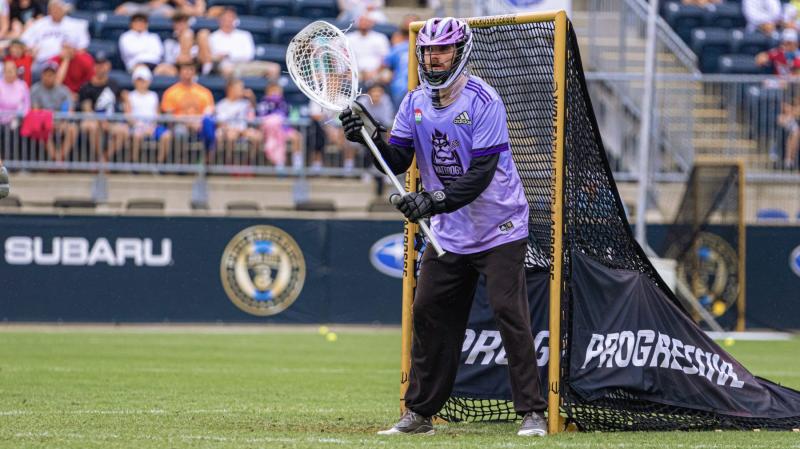
In lacrosse, ground balls win games. This season, focus on transforming yourself into a ground ball vacuum to give your team an edge.
A magnet-like ability to scoop up 50/50 balls disrupts the opponent’s offense and sparks fast breaks the other way. But reliably gobbling up grounders takes dedicated work.
Follow these essential tips to develop your ground ball skills and dominate possession time. You’ll be a ruthless ground ball hound in no time.
1. Perfect Proper Mechanics
Bend knees, get sideways to the ball, point your stick head down and drive through the scoop. Flawless form is the foundation for ground ball success.
2. Strengthen Grip
A crushing grip prevents the ball from bouncing out of your stick on tough scoops. Use hand grippers and tennis ball squeezes to build finger strength.
3. Angle Your Approach
When chasing a ground ball, don’t run straight at it. Cut to intersect the ball’s path so your momentum carries through the scoop.
4. Compete in Drills

Turn ground ball competitions into battles. Force yourself to dive and scrap for every 50/50 ball during live drills.
5. React Quickly
Explosive reaction time lets you pounce on ground balls before your opponent. Do agility drills to sharpen reflexes and first-step bursts.
6. Scoop on the Run
Simulate real-game, full speed ground balls. Have a partner toss you grounders to scoop up mid-sprint without stopping.
7. Focus on Box Drills
The constant changes of direction in box drills translates to ground ball scooping. Stay low while cutting to snatch bouncing balls.
8. Toughness Training
Get comfortable diving straight to the turf for grounders. Slide drills on sports court or grass toughen up your willingness to hit the deck.
9. Use Mini Sticks
Practicing with a mini lacrosse stick forces you to have precise control. Hone your scooping fundamentals by mastering mini ground balls.
10. Strengthen Your Wrists
Wrist curls and compression holds build strength to angle the head properly during scoops without collapsing.
11. Drill With Tennis Balls
Tennis balls are slick and require quick reactions to scoop cleanly. Chase down erratic tennis ball rebounds off walls and nets.
12. Set Scooping Goals
Challenge yourself each practice, like “I’m grabbing 30 ground balls today.” Quantifiable goals boost your motivation.
13. React to Rapid Whistles
Condition yourself to instantly drop and scoop balls at the sound of a whistle. Mimics reacting instantly during live play.
14. Visualize Success
Picture yourself exploding to ground balls and gobbling them up before your opponent. Mental imagery helps build confidence.
15. Embrace Diving Scoops
Don’t shy away from horizontal dives. Leaving your feet extends your range. Fearlessly stick out the claws!
Becoming a ruthless ground ball menace requires hard work, but pays big dividends on the field. Bring the intensity to every loose ball.
Incorporate these tips into your training routine. Soon you’ll be vacuuming up grounders like a black hole, driving your team’s success.
Take your ground ball game to the next level this season. More possessions equal more goals. See you at the bottom of the scrum!
Boost Your Defensive Checking Abilities

Delivering crushing checks is a definitive lacrosse skill. This season, focus on enhancing your defensive checking to shut down dodging opponents.
Effective checking knocks opponents off balance, forces turnovers, and intimidates attackers. But throwing legal, controlled hits takes proper technique and practice.
Follow these essential tips to develop your defensive game. You’ll be obliterating dodgers in no time.
1. Master Proper Body Positioning
Stay balanced with knees bent and weight centered. Keep your stick extended and your head up. Maintain optimal body control.
2. Target the Gloves
Aim checks at the opponent’s gloves holding the stick for maximum legal impact. Deliver hits with the shaft between your hands.
3. Follow Through on Checks
Don’t just jab at the ball. Drive through every check with your lower body. Follow through on contact for momentum transfer.
4. Vary Your Angles
Hit from different angles to keep attackers guessing. Side checks, over the shoulder lifts and straight on pokes all play a role.
5. Incorporate Footwork
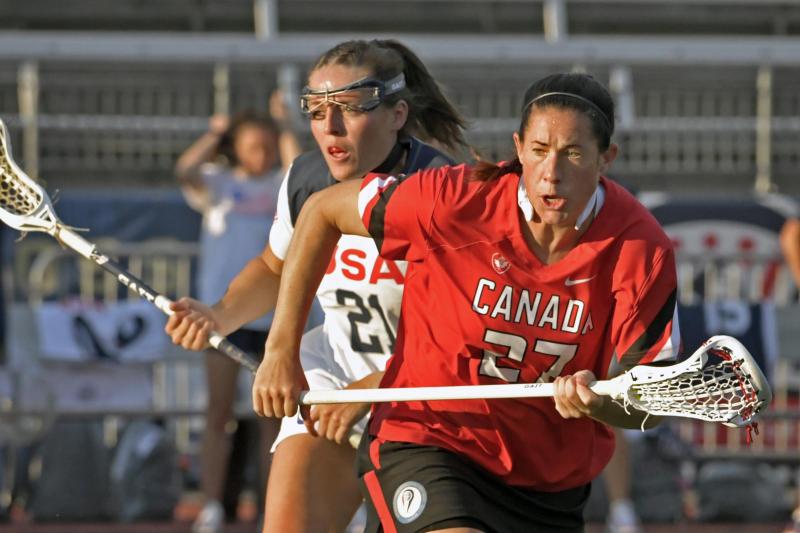
Use agile feet to cut off driving attackers. Shuffle to maintain optimal checking position while mirroring dodges.
6. Check on the Backswing
Time poke checks during the attacker’s windup when their stick is farthest away. Hitting the bottom hand stops their drive.
7. Stay Controlled
Resist overcommitting on big check attempts. Remaining balanced allows you to recover quicker after contact.
8. Check Hands in Live Drills
Drill against dodging offensive players at full speed. Focus on precise hand and stick targeting as they drive.
9. Develop Quick Hands
Lightning fast checks require flexing wrists and forearms. Do tennis ball reaction drills to sharpen reflexes.
10. Contest All Dodges
Don’t allow free dodges in practice. Mirror and harass teammates as they drive during live offensive drills.
11. Swat Ground Balls
Smacking ground balls with your stick trains hand-eye coordination needed for effective checking.
12. Stay Lower Than the Dodger
Bend knees to get leverage under their stick for lifting checks. Low center of gravity aids balance.
13. Time Your Checks
Learn each dodger’s mannerisms. Anticipate their dodges and deliver checks just as they make a move.
14. Drill Your Weak Hand
Don’t neglect your off-hand checking. Even quick one-handed pokes keep attackers honest.
15. Watch Film on Pro Checkers
Study how the pros attack sticks on tape. Imitate their positioning, footwork and strike technique.
Devastating checking requires honing skills through quality reps. But dedicated practice enables you to pulverize dodgers.
Incorporate these tips into your training routine. Soon you’ll be delivering checks with ruthless aggression and control.
Take your defense up a notch this season by obliterating ball carriers. Now get out there and start cracking some plastic!
Increase Your Passing Accuracy
Ready to step up your lacrosse game this year? As any experienced lacrosse player knows, having strong passing skills is essential for success on the field. Whether you’re a midfielder looking to move the ball quickly up the field on a fast break or an attack trying to feed the crease for a scoring opportunity, delivering accurate passes is a must.
But even the best passers can get lazy with their mechanics and end up throwing fluttering ducks that get picked off or sail out of bounds. Keeping your passing technique tight takes continuous work. Master these 15 must-know lacrosse ball handling tips to take your passing accuracy to the next level.
1. Cradle with Both Hands

You’ve heard it a million times from your coaches: “Two hands on the stick!” Cradling with just one hand might look cool, but it leads to sloppy passes and turnovers. Get in the habit of keeping both hands on your stick, even when you’re just running down the field. You’ll have much more control and accuracy when you go to make a pass.
2. Step Towards Your Target
Passing accuracy starts with your feet. Don’t just fling passes flat-footed from a standstill. Take an aggressive step towards your target as you wind up. Transferring your momentum from your lower body gives you more whip on your passes.
3. Follow Through Completely
Just like in basketball or golf, following through is crucial for consistency in lacrosse. Don’t stop your throwing motion abruptly after you release the ball. Allow your top hand to continue its natural follow-through towards your target. This smooth finish will keep your passes on line.
4. Stay Loose
Tensing up as you pass leads to tight, fluttering throws. Keep your upper body relaxed as you wind up, and smoothly accelerate through the pass. Let the momentum of your stick and body do the work for you. Forcing passes usually means mishits and turnovers.
5. Angle Your Stick Down

For maximum accuracy and velocity, angle the head of your stick slightly downwards as you wind up to pass. This puts more tension on the pocket, allowing the ball to spring cleanly out of the mesh. Keep your stick too flat, and the ball can float out weakly.
6. Hit the Target’s Hands
Instead of just leading your teammate, envision hitting them right in the hands or chest with your pass. Having an exact target to aim for will sharpen your accuracy. Even if they have to reach a bit, leading your passes to specific spots gives your teammates the best chance to catch the ball in stride.
7. Communicate the Pass
Don’t just hurl the ball and expect your teammate to be ready. Make eye contact, call their name, and give a loud “Here!” or “Ball!” right as you pass. This allows them to anticipate the pass and be ready to catch and shoot in one motion.
8. Develop Your Off Hand
Being able to pass accurately with just your dominant hand limits your playmaking ability. Spend time each practice session passing and catching with your off hand. You’ll become much harder to defend, and able to make pinpoint passes from awkward angles.
9. Pass to Outside Shoulders
Throwing right to a teammate’s chest may seem natural, but it often leads to close-range turnovers. Instead, aim your passes towards the outside shoulder furthest from the defender. This allows your teammate to catch the ball in space and quickly switch direction on the move.
10. Use Your Whole Body
Your arms shouldn’t do all the work on passes. Pivoting your torso and rotating your hips adds significant power. Imagine your arm is just along for the ride as you swing your shoulders and hips towards the target.
11. Release at the Ear
Where you release your passing hand along the shaft has a big impact on accuracy. For maximum control, release your top hand when it reaches ear-level during your follow-through. This keeps the head from dropping and the pass from sailing high.
12. Visualize the Catch
See the play complete in your mind before you release the ball. Picture exactly where your teammate will be, how they’ll catch it, and what they’ll do next. This mental imagery keeps your passes adaptable and on point.
13. Start Slow

When practicing passing, start by making 5-10 yard stationary passes at half speed. Focus on your mechanics and hitting specific targets. Once you can consistently connect on short, controlled passes, gradually work your way up to harder, longer passes at full speed.
14. Pass on the Run
Standing still passing drills are helpful, but you also need practice hitting targets while on the move. Do 2-on-1 fast break drills where you sprint down the field passing back and forth, culminating in a shot on goal. Mimic the chaotic passing situations you’ll encounter in games.
15. Chart Your Own Accuracy
Keep track of your passing stats in practice to diagnose problem areas. Have a teammate or coach chart your completion percentage for an entire session. Review where your passes are missing and adjust your mechanics accordingly. Setting data-driven goals for improvement really works.
Mastering these technical keys will immediately boost your passing precision and cut down on costly turnovers. But once the fundamentals are locked in, don’t forget to keep practicing game-speed drills. Curling free around cones and hitting stationary targets is helpful, but lacrosse is ultimately a fast, fluid game. Put your new passing techniques to the test in live, competitive situations to get them ingrained.
Ready to become a pinpoint passing machine for your team this season? Pack your lacrosse ball bag and bucket of lax balls, and hit the field for some serious reps. Dial in your form early and often, and your game-changing feeds will become second nature when the game is on the line.
Take Faceoffs to the Next Level
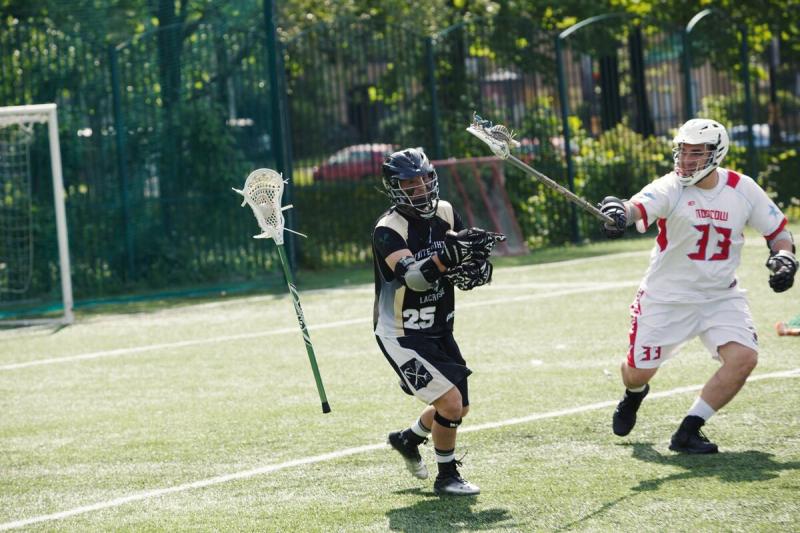
If you’re a lacrosse player looking to dominate between the lines this season, your faceoff game needs to be on point. Winning draws is often the difference between controlling possession and playing from behind. Even with great stick skills, sloppy faceoff mechanics lead to lost ground balls and transition chances for your opponent.
Whether you’re a FOGO specialist or midfielder taking draws, consistency in the ‘X’ requires mastering some key techniques. Use these 15 essential tips to gain an edge off the whistle and give your team the possessions they need to put points on the board.
1. Stagger Your Hands
Gripping your stick too close together reduces your control and power. Space your hands out widely with your bottom hand near the butt end and top hand towards the middle of the shaft. This gives you maximum torque when clamping down on ground balls.
2. Keep Your Elbows Wide
Flaring your elbows out from your sides helps you gain leverage and protect your stick. Don’t allow your elbows to creep in too tight to your body. Maintaining width with your arms prevents the opponent from muscling your stick out of the way.
3. Explode Forward at The Whistle
Winning faceoffs is about explosive power more than brute strength. Uncoil your hips and explode forward at the whistle, driving hard with your lead leg. Hit the ball at full speed to plow through and gain immediate control.
4. Get Low
Bending your knees deeply anchors your base and puts you in better position to scoop ground balls. Don’t stand tall before the draw. Squat down to improve your leverage and get under your opponent’s stick.
5. Keep Your Head Up
Roofing ground balls starts by tracking the ball into your stick. Don’t jam your chin down staring at the ball. Head up allows you to clamp and control the ball in one smooth motion.
6. Clamp Straight Down
When raking ground balls, don’t sweep side-to-side. Jam your stick straight down driving through the ball with maximum force. This traps the ball securely in your pocket so it can’t be poked free.
7. Follow the Ref’s Hands
Focusing on the referee’s arms as he brings them together cues you to explode at just the right time. Don’t try to anticipate the whistle. Wait for the official’s clamping motion to trigger your clamping motion.
8. Develop Counter Moves
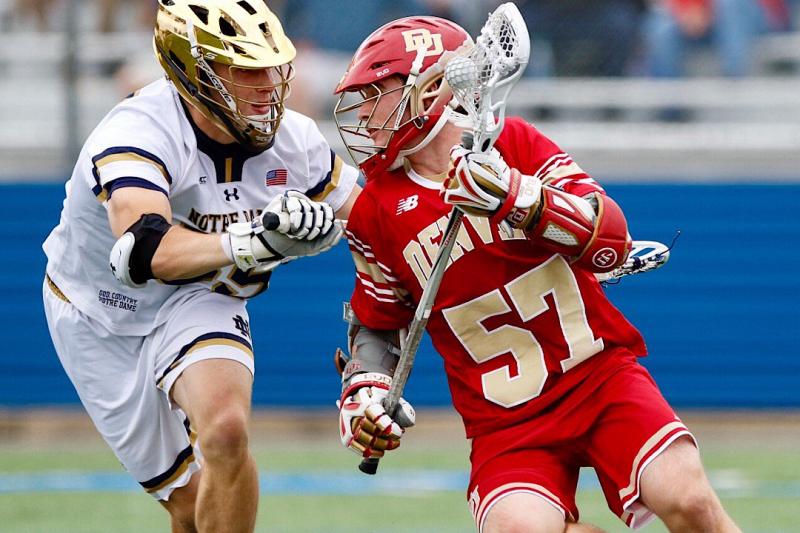
The best faceoff guys mix up their moves to keep opponents guessing. If you always clamp straight down, start throwing in clamp-and-pop techniques. Change stances, hand positions, and angles of attack. The more looks you can show, the harder you’ll be to defend.
9. Angle Your Stick
Tilting your stick’s face slightly upwards and in towards your body helps funnel ground balls directly into your pocket. Don’t jam straight down on top of the ball. Create an angled ramp into the mesh.
10. Rotate Your Grip
Twisting your bottom hand outwards and top hand inwards generates extra power on your clamp. This corkscrew motion engages your whole body in securing possession off the draw.
11. Control the Clamp
Clamping violently can launch ground balls away wildly. Once securing the ball, relax your grip to keep control as you kickstart your clear. Don’t white-knuckle the entire faceoff.
12. Protect Your Stick
Cradle high immediately after clamping down to shield your stick from poke checks. Don’t hold the ball loosely down by your waist. Pop tall to protect possession out of the draw.
13. Follow Your Shot

Never give up on a ground ball. If the initial clamp pops the ball away, keep driving your legs and stick through to the second and third bounce. The extra effort leads to extra possessions.
14. Get Specialized Training
No amount of standard stick work can replicate the intricacies of facing off. Invest time each practice in specialized solo and competitive draw drills. Isolating these scenarios makes you more instinctive in game situations.
15. Watch Film
Study video of upcoming opponents to learn their moves and tendencies. Breaking down their strengths and weaknesses allows you to select the best counters to exploit. Out-scout and out-execute your matchup.
Owning the ‘X’ requires mastering both the finesse and physicality of facing off. Drilling proper body position, grip, and explosion sets you up to dictate possessions for your team. But you can’t get complacent once your technique is sound. Keep evolving your faceoff flair with new counters and tactics to remain a step ahead of your matchup.
Ready to become your team’s go-to FOGO for securing valuable extra man opportunities? Hit the practice turf and log serious reps to get your draw game dialed in. Cement your fundamentals and flex your creativity, and you’ll be ready to give your squad an instant edge when the whistle blows.
Dominate With Silky Smooth Footwork
Quick sticks and cannon shots might get the highlight reels, but disciplined footwork is the hidden key to excelling in lacrosse. Whether dodging defenders or navigating picks and screens, fast feet separate good players from great ones. Sloppy footwork leads to stumbles, lazy cuts, and missed opportunities all over the field.
Elevating your footwork requires drilling deliberate techniques until they become second nature. Master these 15 essential lacrosse footwork tips to take your game to the next level this season.
1. Stay on the Balls of Your Feet
Playing flat-footed makes you slow to react. Maintain athletic posture on the balls of your feet, ready to explode in any direction.
2. Keep Shoulders and Hips Aligned
Twisting your upper and lower body compromises speed and power. Keep shoulders, hips, and feet facing the same direction as you move to stay balanced.
3. Run Tall
Fighting gravity slows you down. Run tall with good posture, not hunched over. Staying upright maximizes speed and efficiency.
4. Pump Your Arms
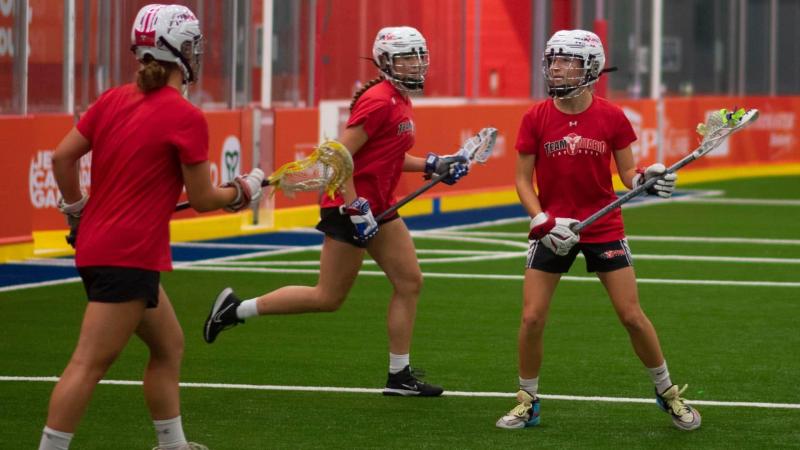
Let your arms drive the motion. Hard, synchronized arm swings complement your stride for maximum velocity.
5. Land Softly
Don’t stomp or slap the ground. Softer foot strikes allows you to reaccelerate quickly off each step.
6. Cut at Sharp Angles
Gradual, looping cuts let defenders follow you easily. Plant hard and cut sharply at 90 degree angles to lose your mark.
7. Roll Through Your Stride
Push off the ball of your back foot and roll your weight forward as you run. This flowing stride reduces impact shock and fatigue.
8. Stop and Start Quickly
Being able to stop on a dime keeps defenders off balance. Practice decelerating into sharp cuts without wasted motion.
9. Maintain Control at Top Speed
Pushing your acceleration is key, but stay in control. Speed without technique just leads to directionless flailing.
10. Use Head Fakes
Sell your cuts by turning your head and shoulders in one direction before planting the opposite way. This gets defenders leaning the wrong way.
11. Change Pace Frequently

Don’t just sprint all-out everywhere. Mix in slower strides to set up change of direction. Keeping defenders guessing opens wider cutting lanes.
12. Stay Low Off Picks
Absorb contact and maintain balance by Getting low and square as you come off screens. Don’t stand upright and exposed.
13. Follow Your Stick
Point your stick where you want to go and your body will instinctively follow. Looking around compromises your balance.
14. Practice Dodges at Full Speed
Drilling dodges slowly builds bad habits. Replicate game speed battle drills to get comfortable maneuvering quickly in traffic.
15. Watch Film of the Greats
Study how elite offensive players set up cuts to emulate their styles. Obsess over footwork nuances top dodgers use to get open.
Elevating your lacrosse IQ means knowing when and how to utilize each technique. But first, ingrain proper fundamentals through deliberate practice. Set up obstacle courses, resistance bands, and ladder drills to program athletic, precise footwork technique into your nervous system.
Once the basics are locked in through solo training, test your new moves at full speed in competitive scenarios. Whether juking defenders or working off ball to get open, fast feet with purpose and control will set you apart. Master these keys, and soon shaking defenders with your silky smooth footwork will feel like second nature.
Ready to take your dodging game to the next level? Grab your lacrosse ball bag and hit the field to log the footwork reps that build muscle memory. Equipped with razor-sharp cuts, lightning quick changes of direction, and ability to stop on a dime, you’ll be nearly impossible to contain one-on-one.
Unlock Sneaky Lacrosse Ball Shooting Angles
Scoring goals in lacrosse requires more than just overpowering shots. The best finishers unsettle goalies by constantly varying their shooting angles and placements. Even if you can crank 100mph sidearm lasers, predictable straight-on shots will get stopped by elite keepers.
Adding sneaky new angles to your shooting arsenal requiresbreaking old habits and expanding your comfort zone. Integrate these 15 tips on sight lines, body position, and stick work to develop the lacrosse IQ to pick apart defenses from anywhere on the field.
1. Scan Above the Goalie’s Shoulder
Don’t just stare at the goalie’s chest. Observe over their shoulder to spot openings along the pipes and corners they can’t see behind them.
2. Freeze the Goalie
Hesitate for a split second before shooting to prevent the goalie from cheating. This pause gives you time to read and exploit their positioning.
3. Vary Your Stance
Shooting flat-footed gets predictable. Sometimes square up, sometimes shoot on the run. Changing your stance obscures your release point.
4. Shoot Across Your Body
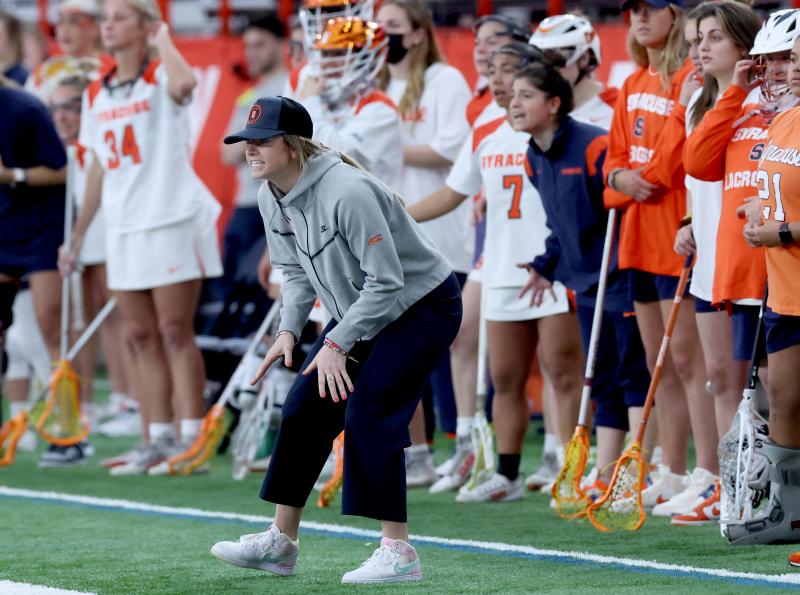
Wrapping the stick around your front or back opens new release points and angles. This unorthodox mechanics throws off goalie reactions.
5. Step Away From Pressure
As defenders close in, create space by stepping away, opening sight lines to corners they aren’t protecting.
6. Shoot Behind the Back
After freezing the goalie, hiding the stick behind your back completely disguises your release angle until the last second.
7. Roll Away from Pressure
When covered on the crease, roll across the goal mouth to uncover hidden shooting windows on the opposite pipe.
8. Bury Bounce Shots
Low skip shots create unpredictable trajectories that frustrate goalies. Perfect placing the skip so the ball lands just inside the crease.
9. Lean Away from Your Stick Side
Tilting your upper body away from your bottom hand on the stick opens wider angles. Don’t square your shoulders perpendicular to the goal.
10. Quick Stick from Any Angle
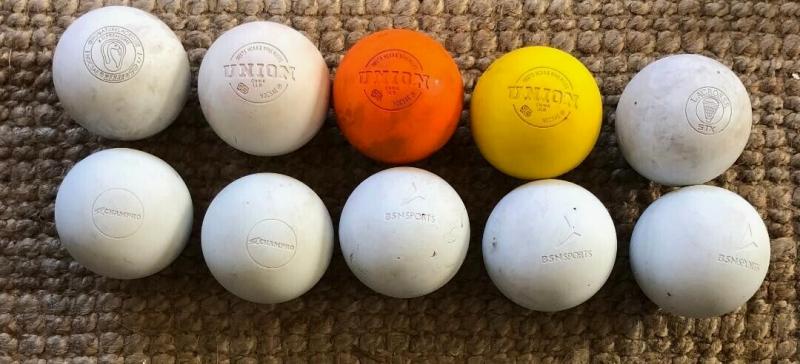
Master quick shooting off immediate catches. This allows you to unleash shots instantly after receiving passes from odd angles.
11. Swim Dodge from X to Shoot
Swim dodging from behind to shoot across your body hides your stick until the last second for stealthier shots on the run.
12. Stutter Step During Approach
Hesitate and change pace in your windup to prevent the goalie from timing their save attempts. Keep them guessing.
13. Fake High, Shoot Low
Look top corner with your eyes to get the goalie leaning up, then hit low skip shots behind their knees as they recover.
14. Develop an Overhand Shot
Adding overhand rips like a baseball swing to your arsenal opens deceptive top shelf angles. Even slight arm variations throw off goalies.
15. Shoot for Deflections
Firing for sticks and shin pads creates chaotic redirects. Aim for the target, not just the net. Use the defense against itself.
Unpredictability is a finisher’s greatest asset. Master these counters until you can seamlessly vary placement and mechanics. But also stay adaptable in the moment. Observe patterns in the keeper’s positioning to exploit weaknesses on the fly.
Ready to become a scoring wizard no goalie can figure out? Grab your lacrosse ball bucket and practice the footwork, release points, fakes and skips it takes to fire darts from everywhere. Soon you’ll have the skills and confidence to bury goals at will no matter how defenses try to shade you.
Learn Proper Wall Ball Rebounding Technique
If you want to improve your lacrosse skills, drilling wall ball is one of the best ways to do it. Wall ball helps you master the fundamentals of catching, throwing, and cradling all in one simple solo drill. But while wall ball seems basic on the surface, there are some finer technical points that can make a big difference in getting the most out of your wall ball training sessions.
Here are some tips on proper wall ball rebounding technique:
Use a regulation bounce wall ball
The first key is using the right type of ball. Regulation lacrosse balls have a certain amount of rebound to them off a solid wall that makes wall ball drills more realistic to actual game play. Using a tennis ball or other light ball often rebounds too quickly off the wall for you to react properly. The feedback and feel of a real lacrosse ball helps engrain proper mechanics.
Stand 10-15 feet from the wall
Position yourself far enough from the wall – about 10-15 feet – to allow the ball to realistically arc on the rebound. Standing too close to the wall doesn’t give the ball enough flight time and can throw off your timing. Give the ball room to mimic passes and shots in a game situation.
Focus on presenting your stick pocket to the rebound
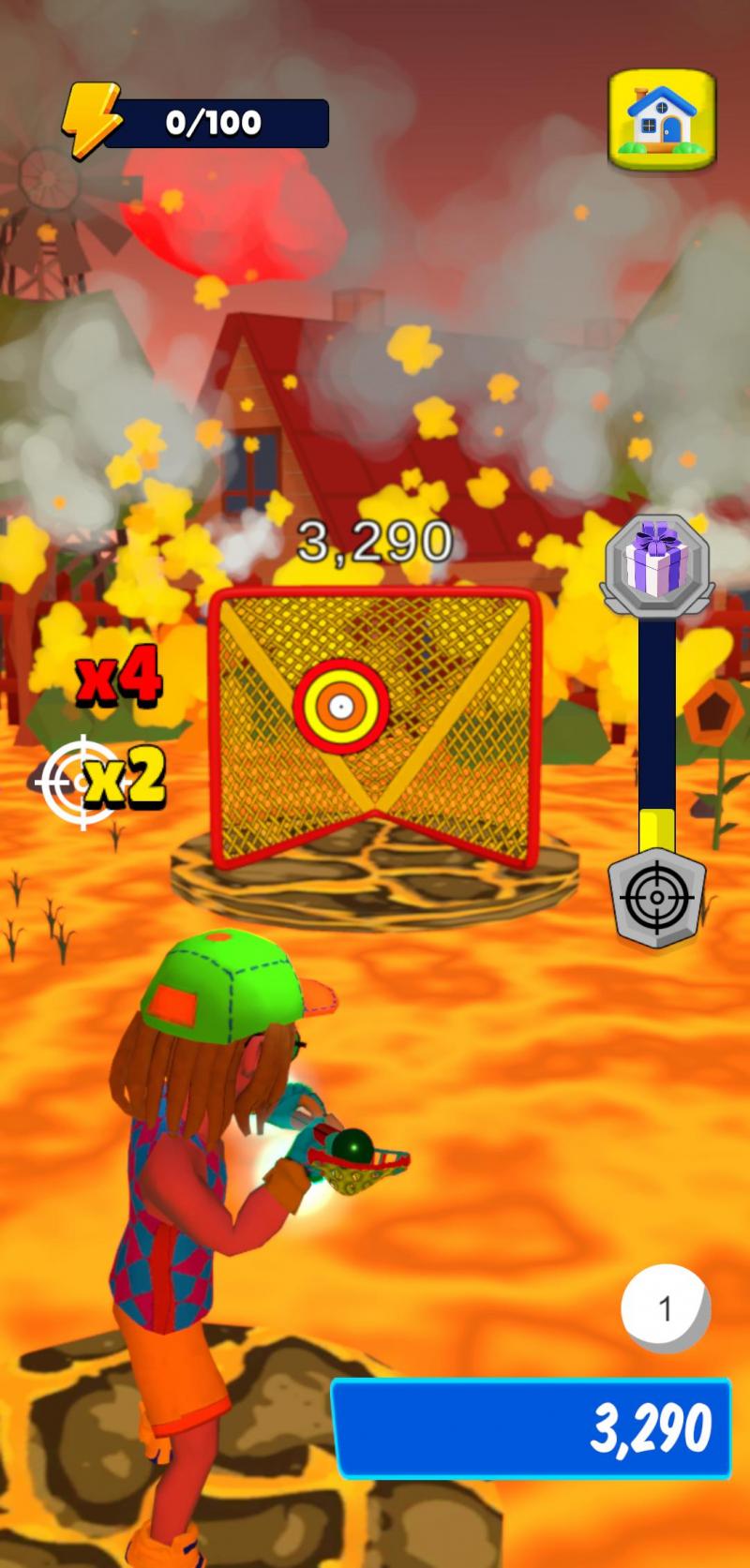
As the ball is rebounding off the wall, concentrate on getting your stick pocket in position to field the ball as smoothly as possible. Keep your hands soft to absorb the impact rather than stopping the ball forcefully. Meeting the rebound with an open pocket leads to better control.
Follow through on cradling after catching
Don’t just catch the ball stiffly and stop abruptly. Flow into a full follow-through cradling motion after fielding the rebound. Mimic how you would cradle the ball in a game after receiving a pass. Developing that follow-through helps build muscle memory.
Practice both forehand and backhand
Make sure to receive and throw wall ball rebounds on both your forehand and backhand side. Alternate back and forth to keep your weak hand skills sharp. Quick backhand catches and throws are essential in lacrosse, so divide your reps evenly.
Work on quick release shots after the catch
Wall ball shouldn’t just be about catching – also practice shooting immediately after receiving the rebound. Quick sticks shots in tight quarters are a huge part of lacrosse offense. Use wall ball to develop faster mechanics releasing shots right after the catch.
Move laterally and approach the rebounds at angles
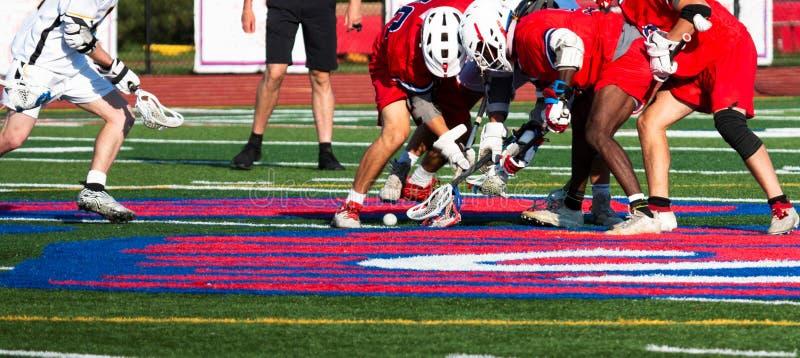
Don’t just stand stationary – work on side to side movement and approach the ball at different angles. Shuffle side to side as you receive wall ball rebounds to mimic dodging and cutting in game situations. React to the rebound as if it’s a live pass you have to adjust to.
Practice throwing different ball trajectories
Don’t just robotically throw flat trajectories – mix up overhand, sidearm, and bounce pass rebounds. Mastering various throwing motions helps makes you a more versatile passer and shooter. The wall reaction will train you to handle all kinds of changing bounces and angles.
Work both right and left hands for stickwork
It’s easy to default to your dominant hand when stickhandling, but be sure to train ball control evenly with both hands. Alternate during wall ball reps to prevent your weak hand skills from lagging behind. Keeping both hands sharp improves coordination and feel.
Control rebounds using all points of your stick
Receive and control wall ball rebounds using not just the pocket but all parts of your stick head – the top, sides, bottom, and scoop. Becoming comfortable fielding passes with any part of your stick makes you a better all-around ball handler.
Focus on form and technique, not speed
Wall ball shouldn’t be about whipping your stick wildly or throwing as hard as possible. Controlled, technically sound mechanics are far more important. Prioritize smooth, crisp catches, throws, and cradles over speed and power. Speed comes later once the muscle memory is built.
Mastering these proper wall ball rebounding techniques requires patience and repetition, but it’s time well invested. Not only will you hone your fundamentals, but you’ll gain the lacrosse IQ to see subtle openings for catches and passes during games from all the angled repetition. Use these tips above to get the most skill-building benefit from your wall ball training.
Step Up Your Conditioning and Endurance
Having strong lacrosse skills and stick work will only get you so far. To really excel on the field, you need the athleticism and endurance to outplay your opponents for four exhausting quarters. Stepping up your conditioning is crucial for taking your game to the next level.
Here are some key conditioning and endurance tips to help bring out your best this season:
Emphasize sprinting and change of direction drills

Lacrosse requires tons of explosive starts, stops, cuts and changes of pace. Focus agility ladder, cone drills and suicide sprints for the quickness needed on the field. Mimic game speed and movements as closely as possible.
Build core and leg strength for power
Strong legs and core give you more force for checks, dodges, shots and ground balls. Mix in lower body lifts like squats and deadlifts along with core exercises like planks into your training routine.
Do stickwork drills at the end of conditioning
Save stickwork for after sprints and conditioning. Drilling with a tired body simulates handling and shooting when fatigued late in games. You learn to play through exhaustion.
Focus on cardio intervals to increase stamina
Long, slow distance running is less lacrosse-specific than intense cardio intervals. Alternate sprints and jogs to mirror the stop-and-go nature of the game and build endurance.
Maintain flexibility to prevent muscle strains
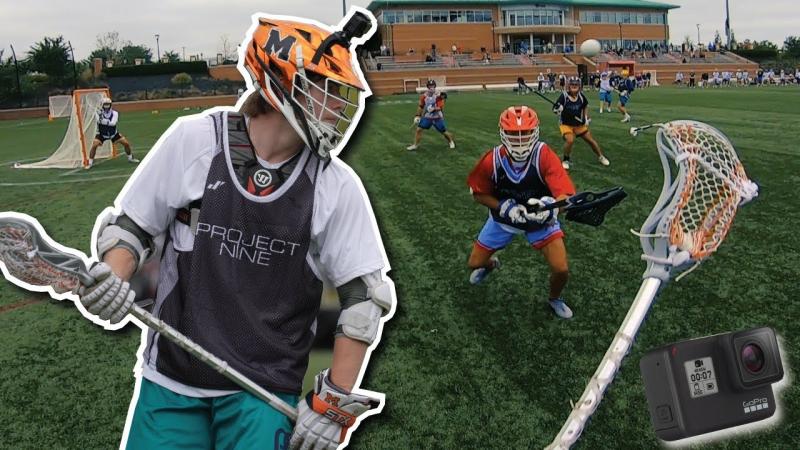
Tight muscles are more prone to pulls and strains. Make dynamic stretching and foam rolling part of your cool down to keep muscles long and flexible for explosive movements.
Hydrate frequently during intense sessions
Dehydration saps energy and focus quickly. Keep water handy for frequent sips, not just when thirsty. Proper hydration helps maintain power and mental sharpness.
Progress training volume gradually over time
Don’t ramp up mileage or intensity too quickly early on. Build your workload progressively to harden your body while minimizing injury risk from overdoing it.
Cross-train with swimming, biking and yoga
Mixing in low-impact cross-training gives your body a break from constant pounding while building fitness. Alternative activities also strengthen complementary muscles.
Pay attention to proper recovery and nutrition
Recover and refuel well between sessions. Poor rest or diet sabotages your gains. Sleep, healthy carbs, lean protein and hydration are hugely important.
Train at game times to prepare body rhythms
Your body reacts differently at different times of day. Match key sessions to game times so your body learns when to peak.
Focus training on your weakest energy systems
Determine if stamina or max power is your limiting factor and tailor training to address that weakness for balanced fitness.
Mimic game intensity in practice
Don’t go half-speed in practice then expect to flip a switch when games start. Push pace in drills so competition speed feels normal.
Work in equipment during training
Get used to how pads and helmets feel early on. Don’t wait until games to adjust to equipment that can throw off mobility and pace.
Monitor workout intensity with heart rate data
Use a heart rate monitor to gauge effort rather than just perception. Quantifying intensity helps optimize sessions.
Building true lacrosse-fit conditioning requires focus, consistency and perseverance. But the payoff on the field against fading opponents late in games makes all the hard work worthwhile. Keep grinding out those sprints and strength sessions, and you’ll be the best-conditioned player on the field.
Gain a Competitive Edge at Tryouts

Making the lacrosse team you want requires more than just talent and skills. With limited roster spots, competition is fierce, and coaches evaluate much more than your abilities. You need to put in work before tryouts to gain an edge over the other hopefuls.
Here are some tips to get a leg up at lacrosse tryouts and earn your spot:
Show up early and stay late
Be the first player on the field well before tryouts start to warm up and visualize. And keep working after they officially end, logging extra time at the coaches’ eyes. Your commitment and work ethic can be a difference-maker.
Talk with coaches beforehand
Introduce yourself to the coaches early and ask what they’ll be looking for at tryouts. Their criteria help you understand their priorities and where you need to impress them most.
Have all gear and paperwork ready
Nothing makes a worse first impression than delaying tryouts because you’re not fully prepared equipment-wise or documentation-wise. Have all required gear, forms, and paperwork ready well in advance.
Show discipline carrying yourself
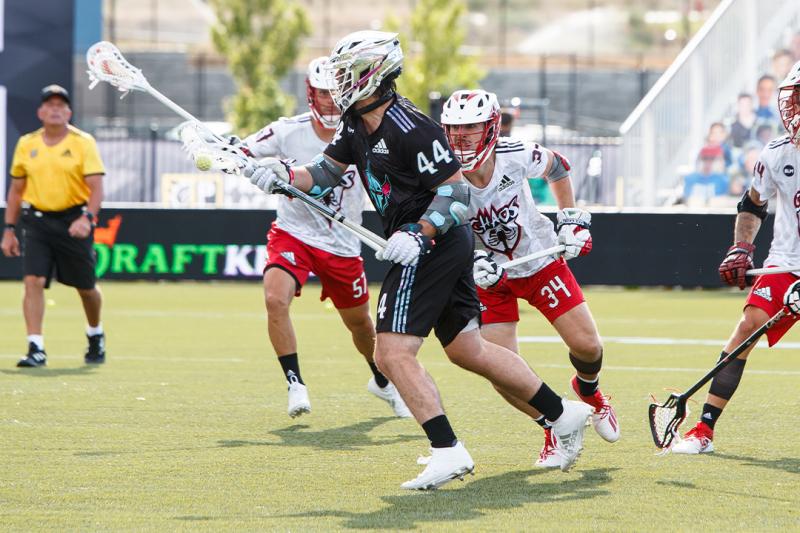
Coaches notice how you compose yourself during downtime as much as your play. Be attentive, avoid goofing around, and demonstrate positive body language at all times.
Find leadership moments
Look for subtle chances to demonstrate your leadership even as a tryout player. Coaches love seeing you encourage others, point things out, and take initiative without overstepping.
Ask questions at appropriate times
Having thoughtful questions shows coaches your engagement and lacrosse IQ. But don’t interrupt drills or talk too much. Find the right moments to pick the coaches’ brains briefly.
Show hustle and intensity constantly
Run hard every drill rep. Finish every ground ball. Sprint on and off the field. Let your competitive zeal show through your hustle, even when tired. Effort and want-to can really sway coaches.
Don’t get rattled by mistakes
You’ll inevitably make some mistakes in the pressure of tryouts. What’s key is how you respond. Regroup quickly, keep body language upbeat, and don’t compound errors.
Be coachable and open to feedback
Coaches want players who welcome hard coaching and adjust quickly. Respond positively to feedback and corrections, even if you disagree, and fix mistakes fast.
Play heads-up situational lacrosse
Coaches want players who make smart, winning plays under pressure. Make quick reads, move well off ball, and execute high lacrosse IQ plays when it counts.
Show your playmaking ability
Look to attack weaknesses when you get the ball and try audacious throws and dodges. Calculated risk-taking and playmaking demonstrate the confidence coaches want.
Stay engaged from the sideline
When you’re not in a drill, study intently, cheer on teammates, and help out where you can. Sideline body language speaks volumes to coaches.
Talk with coaches afterward
Check in with coaches after tryouts wrap up. Ask their honest thoughts on your performance and areas to improve. That reflection can provide motivation.
Tryouts are about far more than raw skills. Set yourself apart with work ethic, conduct, coachability and lacrosse smarts. Seize every small opportunity to show you’re a player and leader. Do that, and you’ll earn your spot.

